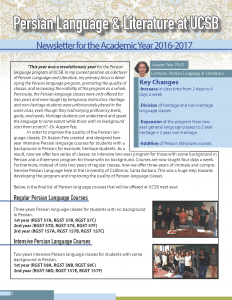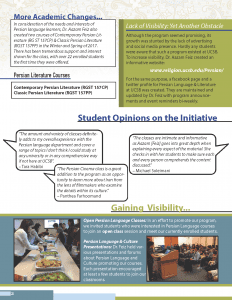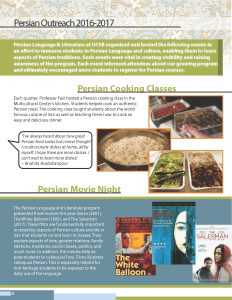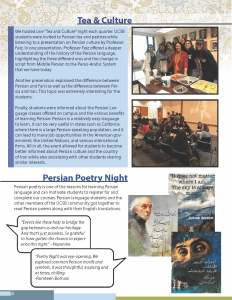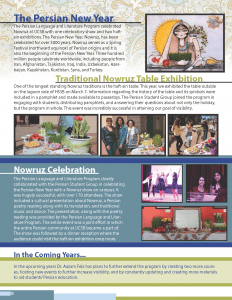Humanities and Social Sciences
University of California, Santa Barbara, Isla Vista, CA 93117
USA
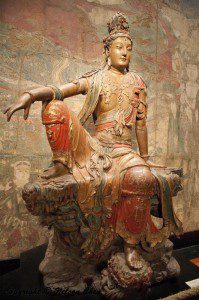
March 8th and 9th, 2014
McCune Conference Room, HSSB 6020
University of California, Santa Barbara
Full Schedule + Speaker Abstracts ![]()
A graduate student conference to highlight cutting-edge research from the Buddhist Studies programs at Berkeley, UCLA, UCSB, UCSC, and Stanford.
Hosted by the Department of Religious Studies, the Department of East Asian Languages and Cultural Studies, the Dalai Lama Chair in Tibetan Studies, ISF Chair in Shinto Studies, and the Division of Humanities and Fine Arts and the College of Letters and Science, University of California Santa Barbara.
FULL CONFERENCE SCHEDULE:
[expand title=”Saturday, March 8th”]9:00-9:10
Welcome Address
9:10-10:00
“A New Buddhist Text and a Shift away from Early Mahāyāna”
Jason McCombs (UCLA)
discussant: Alexander von Rospatt (Berkeley)
Scholarship on Indian Mahāyāna Buddhism is mired in an utter obsession over its diffuse origins, even though the evidence suggests that early Mahāyāna was a marginal movement or collection of movements. The later institutionalization of Mahāyāna and its life as a significant religious entity that left a mark on the material record of India are little treated, if at all. This paper will introduce the Dānapāramitā-sātra and will be one attempt to shift the field away from its debates over Mahāyāna origins. The date of this text appears to coincide with the appearance of Mahāyāna in the material record. It may therefore help us to understand the institutionalization of Mahāyāna in India.
10:00-10:50
“Puranic Inflections: Visions of the Devī in a Buddhist Yoginītantra”
Ryan Damron (Berkeley)
discussant: David Gordon White (UCSB)
In seeking to understand the formative influences on Buddhist tantric systems scholars have generally focused their attention on non-Buddhist tantric traditions. While this approach has deepened our understanding of the Buddhist Tantras within a distinctly tantric milieu, other sources of influence have been largely ignored. Passages from the 9th century Buddhist Mahāmāyā Tantra suggest that its authors were not only well versed in the tantric literature of the period but were also influenced by the Purāṇas and their cosmogonic depictions of the Great Goddess, the Devī. The Mahāmāyā Tantra reveals a complex interaction of a vision of the feminine divine that is neither Buddhist nor tantric with an evolving Buddhist tantric system in which feminine principles were moving increasingly to the fore. The text challenges our understanding of the sociology of the Buddhist tantric tradition and reveals the plurality of sources that influenced it during a formative moment in its history.
10:50-11:00
Coffee Break
11:00-11:50
“Piṇḍapātika as a Standard Practice in the Vinaya”
Nicholas Witowski (Stanford)
discussant: Robert Buswell (UCLA)
Among scholars, there is a general discomfort in applying the term asceticism to the mainstream of the early Indian Buddhist monastic tradition. In this paper, I will challenge this notion utilizing evidence from the Vinaya to delineate what I take to be a significant and pervasive ascetic trajectory in the early monastic tradition. By asceticism, I refer specifically to the practices which comprise the list of dhūtaguṇas. Of these practices, I will focus on piṇḍapātika, or the practice of walking from house to house each morning after the householders have finished their meal in order to receive their food scraps. I will draw upon episodes in the Vinaya to develop a literary-anthropology supporting my contention that the ascetic vocation of piṇḍapātika was regarded as significant and pervasive—what I shall term a standard practice—in the foundational texts of the Buddhist legal tradition.
11:50-12:40
“The Two Stages Enter the Canon: Some Observations on the Relationship Between the Samājottara and the Early Jñānapāda School”
Catherine Dalton, (Berkeley)
discussant: Greg Hillis (UCSB)
In the contemporary Tibetan tradition the practice of Buddhist tantra is divided into two stages: the development stage (utpattikrama) and the completion stage (utpannakrama). While recent scholarship has identified the canonical locus classicus for the two stages of tantric practice in the Samājottara, the supplementary tantra to the Guhyasamāja Tantra, a parallel passage occurs in the works of the late 8th-/early 9th-century author Buddhajñānapāda. This paper examines the two passages, demonstrates that Buddhajñānapāda’s work is the earlier of the two, and examines the implications of this instance of intertextuality for our understanding of the relationship between the Samājottara and the Jñānapāda School of Guhyasamāja exegesis.
12:40-1:40
Lunch
1:40-2:30
“Legend to Flesh and Bone: The Ostensive Reenactment of a Tantric Hero”
Joel Gruber (UCSB):
Discussant: Jacob Dalton (Berkeley)
The twelfth-century author(s) of The Great History of Dzokchen Nyingthig (rdzogs pa chen po snying thig gi lo rgyus chen mo) inherited multiple competing, and at times contradictory, legends of one of the greatest Indian saints of Tibet’s golden age, Vimalamitra; this collection of stories became the foundation for an extensive and miraculous life story detailing Vimalamitra’s role in practicing and then promulgating the Dzokchen Nyingthig teachings. The next eight hundred years of narratives surrounding Vimalamitra’s emanations ensured that Tibet’s golden age remained a part of the Tibetan present, and that contemporary “revealed” texts could be introduced as ancient tantric wisdom. As Vimalamitra transformed from emanating in the presence of Tibetans to emanating as Tibetans, the archetypical Indian tāntrika from the golden age also became increasingly Tibetan. This presentation analyzes two sādhanās that Vimalamitra purportedly bestowed upon the famous nineteenth-century treasure revealer, Chokgyur Lingpa, each of which provides explicit directions on how to become Vimalamitra. By drawing on and adapting Eliade’s concept of the “eternal return” and bringing it into dialogue with folklorists Dégh and Vázsonyi’s theory of “ostension” and anthropologist Luhrmann’s definition of “interpretive drift,” I present a model for theorizing the complementary relationship between Vimalamitra’s hagiographies, the tantric rituals found in the texts they legitimated, and the history of Vimalamitra’s emanations, which I argue are collectively the history of a Nyingthig community’s use of narrative, ritual, and revelation to establish an uniquely Tibetan tantric identity.
2:30-3:20
“Thorny Lotus: Kumārajiva’s reading of the Lotus Sūtra”
Rafal Felbur (Stanford)
discussant: Raoul Birnbaum (UCSC)
The Lotus Sūtra’s career in East Asian Buddhist history has been studied extensively; by contrast, we still know little of this text’s reception by the author of its most influential translation, Kumārajīva, in his text’s earliest years in China (roughly 406-413). In my paper I trace some of this story. My sources include the Dasheng dayi zhang 大乘大義章, the Chu sanzang jiji 出三藏記集 (especially materials by Sengrui 僧叡), as well as Huida’s 惠達 Commentary on the Zhao lun 肇論疏). Kumārajīva’s attitude to the Lotus is ambivalent. First, the prediction of Buddhahood for śrāvakas he interprets not in a metaphysical-universal sense – in principle śrāvakas cannot in fact become Buddhas, pace later Tathāgatagarbha-based readings – but rather in conservative terms as a one-time exceptional application of the Buddha’s supernatural powers. Second, while compelled to accept the Lotus as buddhavācana, he is unwilling to grant it the supreme status that the text demands for itself, for fear of what he sees as its potentially destructive exclusivist implications.
3:20-3:30
Coffee Break
3:30-4:20
“A Preliminary Study of the Theory of Imperishable Spirit”
Sangyop Lee (Stanford)
discussant: William Bodiford (UCLA)
The advent and prevalence of the doctrine of imperishable spirit 神不滅 in early Chinese Buddhism have often been thought as a result of Daoist or indigenous thoughts’ influence which was eventually overcome by Kumarajiva’s introduction of more “accurate” Buddhism. I question this long-held understanding from analyses of early Chinese translations of Indic Buddhist texts whose postulation of imperishable spirit lacks any clear evidence of Sinitic influence, and also early Chinese Buddhists’ perception of the doctrine whose majority regarded it as an unquestionably orthodox position of the “original” Indian Buddhism. These facts suggest that the doctrine of imperishable spirit was in early Chinese Buddhism yet another independent “canonical” doctrine that could have been employed and appropriated for multifarious purposes, and that Chinese Buddhists’ discourses on the imperishable spirit should accordingly be studied on its own as a legitimate doctrinal investigation.[/expand]
[expand title=”Sunday, March 9th”]9:10-9:50
“Lotus in the Mud, Incense in the Air: An Inquiry into the East Asian Olfactory Imagination”
Peter Romaskiewicz (UCSB)
discussant: Natasha Heller (UCLA)
The burning of incense is an entirely ubiquitous yet thoroughly understudied aspect of
religious practice in East Asia. Numerous medieval Chinese Buddhist and Taoist
authorities ascribed therapeutic, apotropaic, and aphrodisiac properties to incense and other aromatics in addition to their function as a medium of ritual communication and
malodorous cleansing. Some of these central properties were outlined in Daoshi’s medieval encyclopedic compendium, the Fayuan zhulin, which dedicated a full chapter to recounting stories associated with the virtues of aromatics, while other Buddhist texts, such as the Lotus Sutra, noted that by concentrating on the faculty of smell one could realize emptiness. All of these aromatic properties formed a rich semiotic nexus that was referenced each time incense plumes lifted into the air. I suggest that his olfactory imagination can shed new light upon the Ritual of the Great Compassionate Wisdom Seal
of Avalokiteśvara (T1042), an esoteric text of obscure origin, in which the powerful purifying properties of burning incense can envelop a practitioner and transport him to the Pure Land in the present mundane world.
9:50-10:40
“Female Iconography and Buddhist Inscriptions from Đông Dương (Vietnam)”
Mya Chau (UCLA)
discussant: John Kieschnick (Stanford)
The archaeology of Champa consists of a majority of Hindu arts and architecture. Buddhism co-existed with Hinduism, but it was not the dominant religion. In 875 CE, Indravarman II was the first Cham ruler to actively support Mahayana Buddhism with the construction of the Đồng Dương monastery located in present-day Bình Định, Vietnam. This presentation demonstrates that Cham Buddhist inscriptions recorded the high status of royal women in the court and some of the royal wives along with the king shared an interest in Buddhism. A rare seated, Buddha statue with the legs pendant— a posture associated with female goddesses also intensified the importance of female power. Narrative relief carvings from two altar pedestals also emphasize the prominent role of females. In the 9th—10th centuries, the female role in art and Buddhism at Đồng Dương is unique in the Mahayana context. I argue, that the seated Buddha with the legs pendant and narrative panels of the Buddha’s life promoted the female realm. The female iconography was an early development in the visual arts to reinforce an anthropomorphic female and male cosmological dualism. The belief is still considered significant in modern Cham society.
10:40-10:50
Coffee Break
10:50-11:40
“Sacred Mother Bodhisattva, Buddha and Cakravartin: Recasting Empress Jingū as a Buddhist Figure”
Emm Simpson (UCSB)
discussant: Ryan Overbey (Berkeley)
Empress Jingū appears in the earliest Japanese chronicles, the Kojiki and the Nihonshoki, as a powerful ruling empress and a shaman who can communicate with the gods of Japan. Her supposed conquest of Korea and consolidation of Yamato rule under her son, Emperor Ōjin, is bolstered in these texts by divine power in the form of miracles bestowed on the empress and her fleet by the kami she invokes. The narrative was sufficiently engaging and useful to be retold in medieval Japan as a justification for the relationship between the imperial family, and by extension Japan, and the divinities. Yet with the development of Buddhism with Japan, native kami were not the only deities in question. Rather than discard the story of Empress Jingū and her son, Buddhist elements found their way into the narrative through its main characters.
Here, I will explore how the Hachiman gudōkun (The Strange Tales of Hachiman’s Childhood, 1308-1318) presents Empress Jingū as not only an empress and shaman, but also as the Seibō bosatsu (Sacred Mother Bodhisattva), a manifestation of the Buddha Amitābha, and a cakravartin, a dharma ruler. This jisha engi is the origin narrative of the Iwashimizu Hachimangū, a shrine-temple complex outside of Kyoto intimately tied to the imperial family. Its tutelary deity, Hachiman, had already been titled a bodhisattva and identified with Emperor Ōjin; by extending the Buddhist elements to his mother, the shrine priests who authored the engi recast the whole story as one in which the dharma plays as key a role as that of the kami.
11:40–12:30
“Lineage Constructs and Realignment of the Gods: Examining the Thought of Jōin (1682–1739)”
Caleb Carter (UCLA)
discussant: Fabio Rambelli (UCSB)
A proliferation of new religious currents emerged in early modern Japan as a wide spectrum of doctrines and practices circulated throughout society. With the expanding publication of religious texts, the broad growth of pilgrimage, and the diffusion of local cults, practitioners freely experimented with novel forms of doctrine, identity and ritual. This talk will explore one such case through the work of Jōin 乗因 (1682–1739), an elite member of the Tendai institution. From 1727 to 1738, Jōin served as the chief administrator to the temple-shrine complex of Mt. Togakushi (in present-day Nagano Ken). Prior to this appointment, he had been initiated into Sannō Ichijitsu Shintō 山王一實神道—a lineage that deified Tokugawa Ieyasu as the Great Avatar of Eastern Radiance (Tōshō daigongen 東照大権現). While Jōin’s early thought followed the school’s original structure, he profoundly transformed Sannō Ichijitsu Shintō by merging it with the lineages, deities and history of Togakushi during his time as administrator to the mountain. This talk will map out the various components of his new school, consider the tools Jōin employs in his formulation of it, and reflect on the implications for the cult centered on the Great Avatar. Special attention will be given to how the roles of lineage and place in his schema fit into the broader context of early modern religious thought in Japan.
12:30
Closing Words
[/expand]











